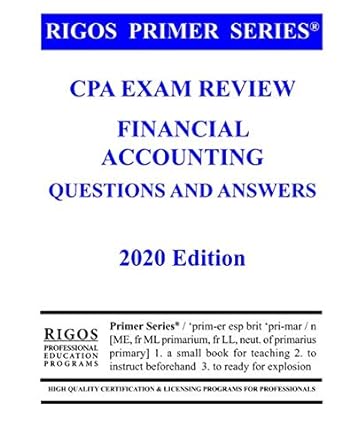Question
I need some help to this question I am struggling with... Based on these numbers/stats... Which company appears to be the more efficient at using
I need some help to this question I am struggling with... Based on these numbers/stats...
Which company appears to be the more efficient at using its assets? Explain your answer and identify which ratio(s) from Requirement a you used to reach your conclusion. I need a detailed answer please for this assignment PLEASE.
- Compute the following ratios for the companies 2014 fiscal years:
- Current ratio.
Total current Assets / Total current liabilities = Ratio
The Kroger Company
$8,830 / $10,705 = .82 =a ratio of .82:365 days
Whole Foods Market
$1,756 / $1,257 = 1.39 = a Ratio of 1.39:365 days
- Average days to sell inventory. (Use average inventory.)
The Kroger Company
(Beginning Inventory + ending inventory) / 2 = average inventory
($7,951+$8,178) / 2= $8,064.5
Cost of goods / average inventory = Inventory Turnover
$78,138 / $8,064.5 = 9.6
365 days/ inventory turnover = Average days to sell inventory 365 / 9.6 = 38
An average of 38 days to sell inventory
Whole Foods Market
(Beginning Inventory + ending inventory) / 2 = average inventory
(414 + 441) / 2 = $427.5
Cost of goods / average inventory = Inventory Turnover
$9,150 / $427.5 = 21.4
365 days/ inventory turnover = Average days to sell inventory
365 / 21.4 = 17
An average of 17 days to sell inventory
- Debt to assets ratio.
The Kroger Company
Total Liabilities / Total assets = Debt to assets
$23,886 / $29,281 * 100 = 81.57 %
Whole Foods Market
$1,931 / $5,744 * 100 = 33.6%
- Return on investment. (Use average assets and use earnings from continuing operations rather than net earnings.)
Total assets (beginning of the year) + Total assets (ending of year) / 2 = average assets
Continuing operations/ average assets = ROI
The Kroger Company
$29,281 + $30,556 / 2 = $29,918.5
$2,282 / $29,918.5 * 100 = 7.62%
Whole Foods Market
$5,538 + $5,744 / 2 = $5,641
$946 / $5,641 * 100 = 16.77%
Please see my contribution for Part A 5-8 below. As per Daniels email we are awaiting to hear from Professor Brown in regards to if we need to include a peer-reviewed reference, depending on Professor Browns response I will add a reference if necessary.
A5.) The gross margin percentage for the Kroger Company is 20.57%, on the other hand the gross margin percentage for Whole Foods Market, Inc. is 35.54%. The procedure followed to get this information was dividing the gross profit by the revenues.
Kroger Company: $20,237/ $98,375
Whole Foods: $5,044/ $14,194
A6.) The asset turnover for the Kroger Company by using the average assets is 5.12%, and the asset turnover for Whole Foods Market, Inc. is 10.26%. The formula used to conclude this information was to divide the net earnings by the average of total assets.
Kroger Company: $1,531/ $29,918.50
Whole Foods: $579/ $5,641
A7.) The net margin, by using the earnings from continuing operations for the Kroger Company is 1.5%, where the net margin for Whole Foods Market, Inc is 1.63%. In order to get this calculation one must take the earnings from continuing operations before income taxes and divide that number by the net earnings.
Kroger Company: $2,282/ $1,531
Whole Foods: $946/$579
A8.) The plant assets to long-term debt ratio for Kroger company is 4.37%, where the plant assets to long-term debt ratio for Whole Foods Market, Inc. is 4.34%. In order to figure out this ratio one must take the property and equipment, net of depreciation and dive that by the total long-term liabilities
Kroger Company: $16,893/ $13,181
Whole Foods: $2,923/ $674
Step by Step Solution
There are 3 Steps involved in it
Step: 1

Get Instant Access to Expert-Tailored Solutions
See step-by-step solutions with expert insights and AI powered tools for academic success
Step: 2

Step: 3

Ace Your Homework with AI
Get the answers you need in no time with our AI-driven, step-by-step assistance
Get Started


